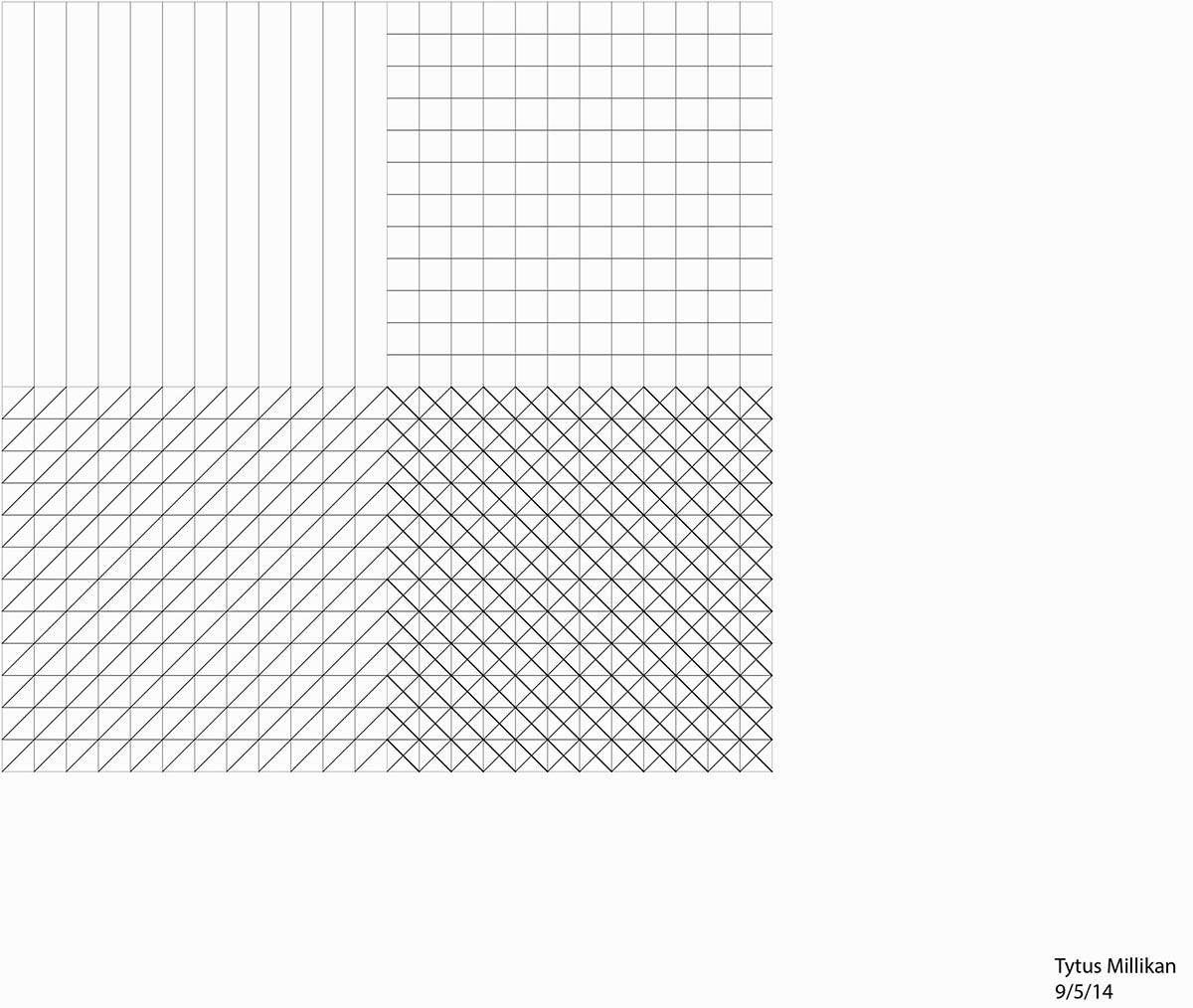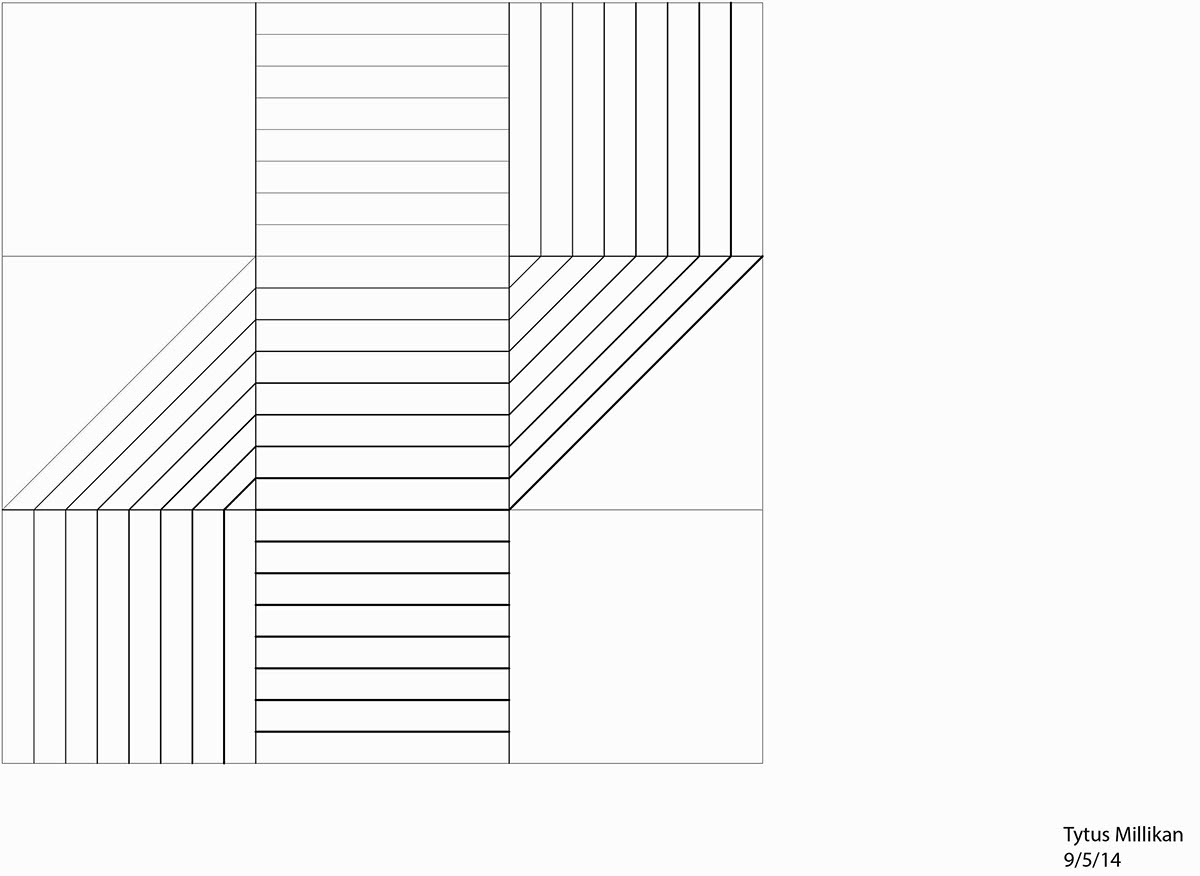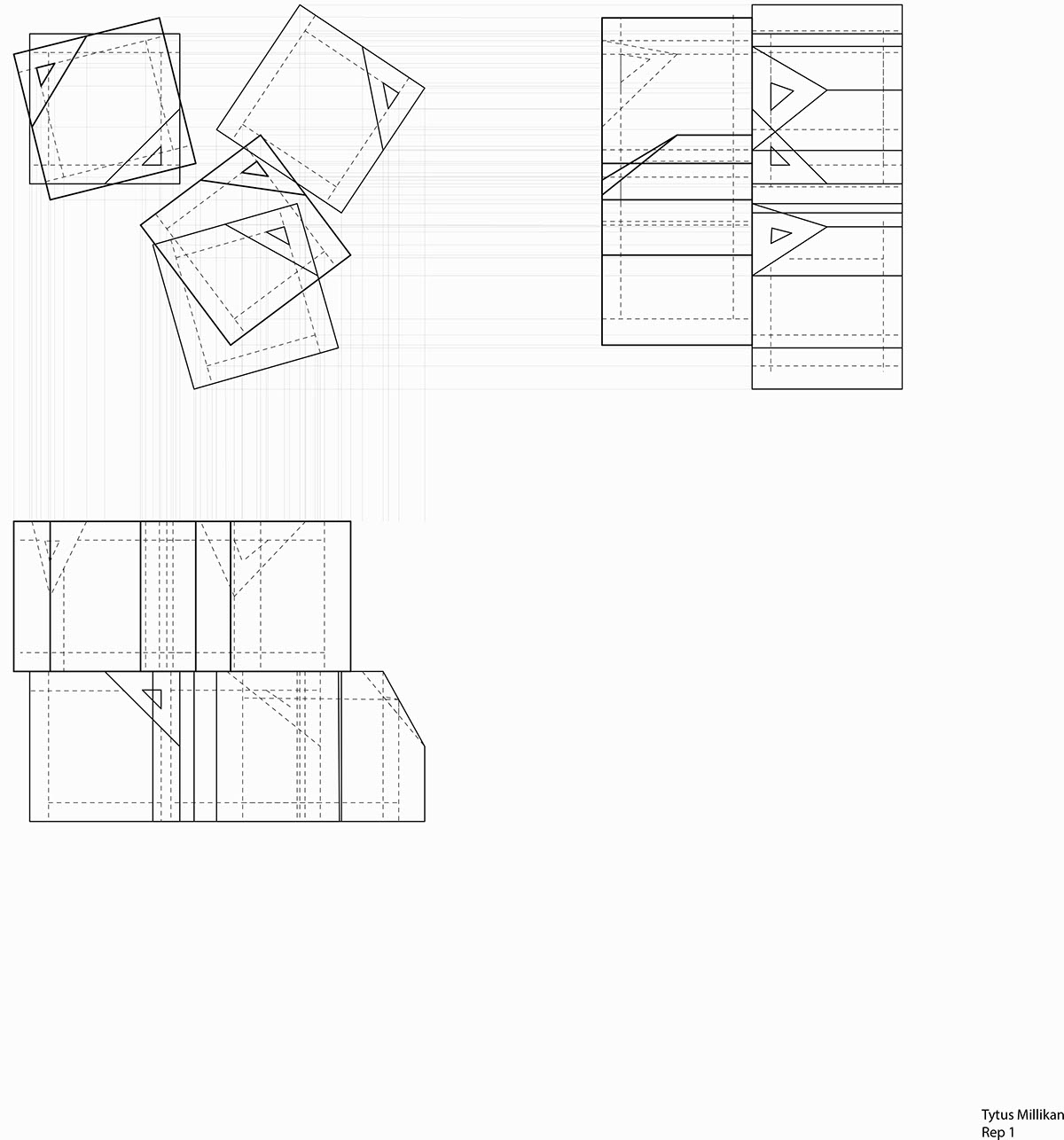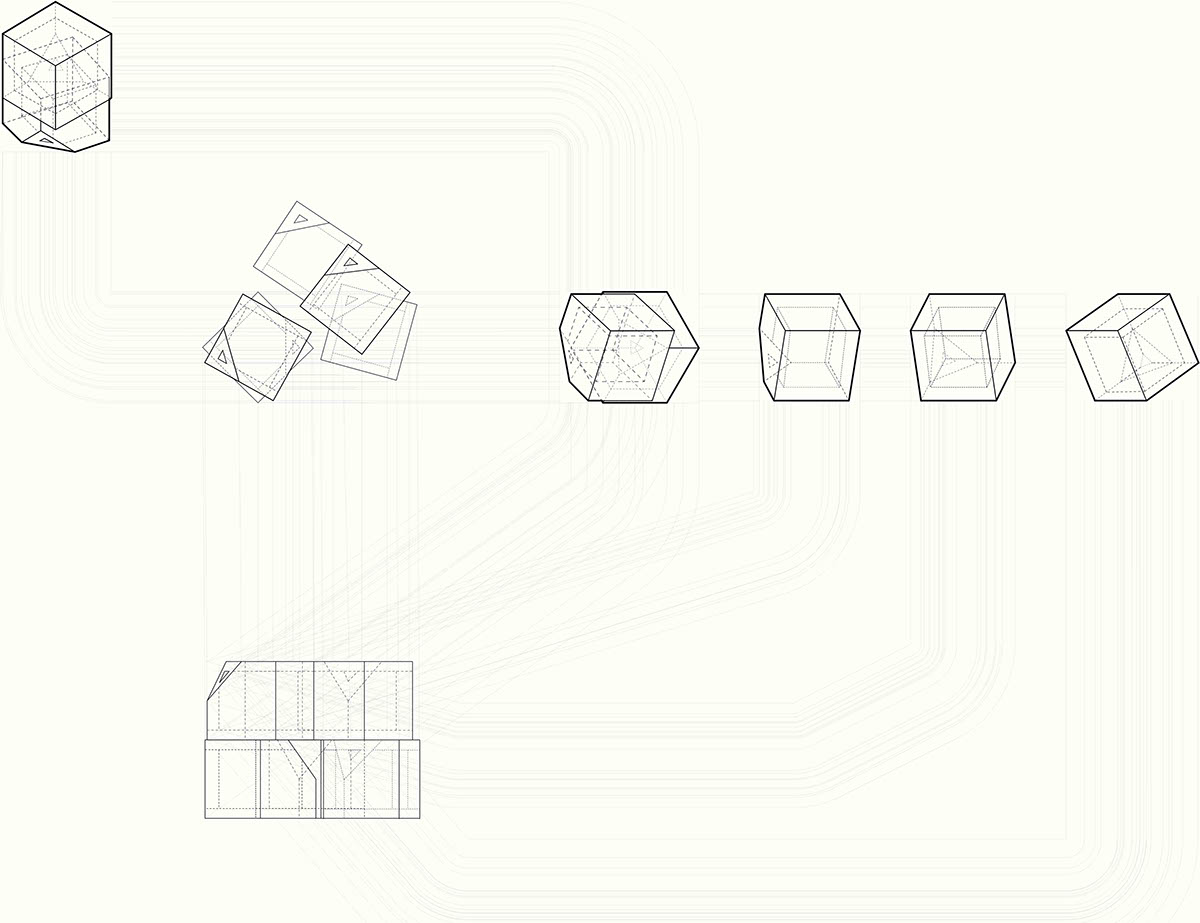Representation I was a drafting course to familiarize us with constructing objects both on paper, and digitally. It was processional, initially understand how to extract shapes from grid, to understanding the drawing process of booleaning two objects in space. It was a rigorous process for architecture freshmen that wielded some promising results.

Line Studies using overlays in order to grasp the concepts of using the Adobe Ilustrator Program as well as Rhino.

Line studies focusing on the usage of line weights in order to help differentiate depth of lines on a page.

Overlaying Patterns within a boundary in order to shapes, and using constructions lines, being to individualize those shapes identified from the overlays.

The first look at the actual cube studies. Using a top view from a pre-arranged formation of the cubes, front and side elevations were constructed and projected in their respectful directions in order to help visualize hidden lines and the depth of the cubes in the arrangement.

Using the previous formation, which was used for all projects focusing on the combination of all five cubes, several section cuts were made from plan view. Using the same method, plan sections cuts were made from the front elevation of the cubes.

The first look at dimensionalizing the cubes. Combining the previously used plan view of the cubes and the Make 2D view of the formation created in a 3D Perspective view, the arrangement comes to life. Projecting one specific cube out right, and then exploding the faces provides an understanding of the anatomy of a single cube. Using a 3D section cut line, the two cubes cut come forward to allow a view of the surfaces that were cut and a view into the inside of the cubes.

Midterm: Using knowledge gained from the previous studies, an auxilery view of a selection of cubes from the formation was utilized in a fashion to show different angles of one cube rotated on a line. These studies would eventually be combined to express a final drawing in a unique fashion.

Final: Using "Moire" as the piece's title, moire patterns were used to invoke a sense of 'one of a kind' ensemble. Projections of auxiliery shadows both in a common plane, and an inversed black plane, tones of surfaces to differentiate the multiple cuts to the cube, and a beautiful moment where one surface is split between the planes to define the differences, brings this piece of work to a unique conclusion.

